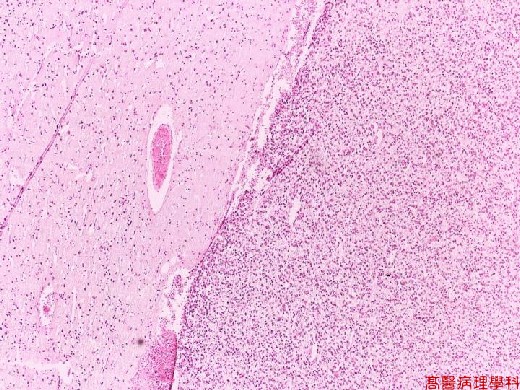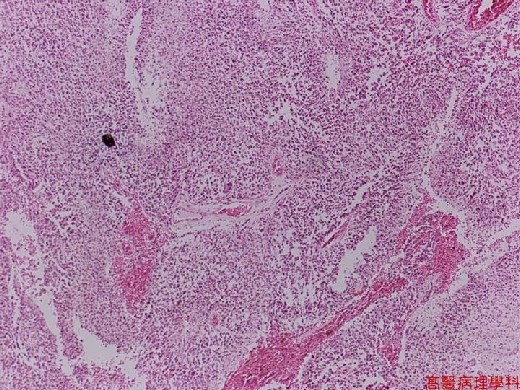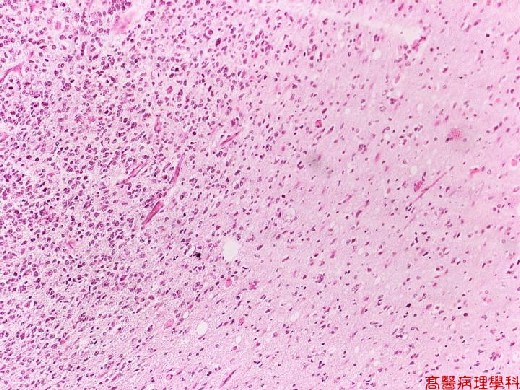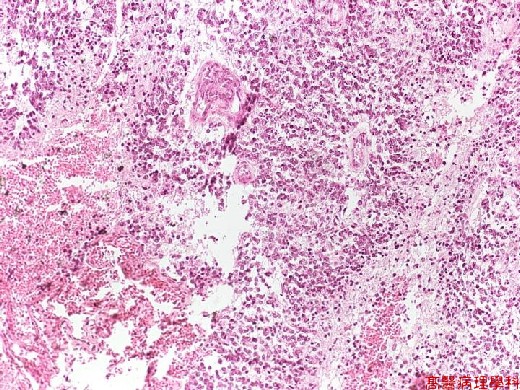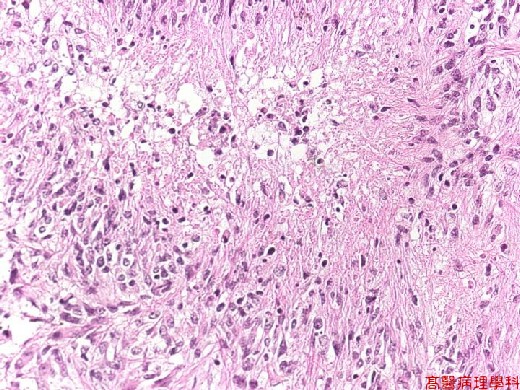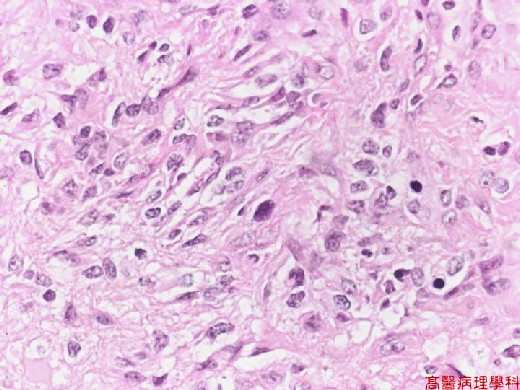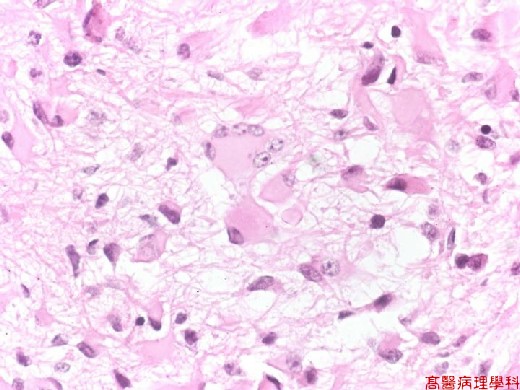《Slide 162.》Glioblastoma multiforme, Cerebrum
A. Brief Descriptions:
-
Astrocytic tumors: tumors composed predominantly of neoplastic astrocytes.
-
WHO grading : diffuse astrocytoma (WHO grade II), anaplastic astrocytoma (WHO grade III), glioblastoma (WHO grade IV).
-
Glioblastoma multiforme: high agressive, poor prognosis (mean survival 1 year), and irregular infiltrative lesion.
B. Gross Findings:
-
可以同時觀察到firm white areas和yellow softer necrotic areas,甚至有時可以看到cystic change和出血區。
C. Micro Findings:
-
Necrosis and pseudopalisading.
-
Endothelial proliferation & anaplastic astrocytes.
-
Hypercellularity,bazarre nuclei,multinucleated cells,mitoses (vary considerably).
D. Others:
-
GBM可以視為uniformly undifferentiated glioma,通常可以局部混有astrocytoma,甚至是oligodendroglioma,或是ependymoma,不過罕見。
-
Lower grade glioma隨著時間一久可以進展到glioblastoma,可能與染色體第10對的基因缺損有關。
-
GBM好發的位置常在supratentorial,也可能在brain stem發現,cerebellum和spinal cord的發生雖然也可能,不過罕見。
E. Reference:
-
Robbins Pathologic Basis of Disease, 6th ed. P.1343-1348.
|
|
【 Fig. 162-1 (LP)】Infiltrated border in junction of normal part (left) and tumor (right).
|
|
【 Fig. 162-2 (LP)】Hypercellular tumor with necrosis and perinecrotic pseudopalisading.
|
|
【 Fig. 162-3 (LP)】Atypical (ring-shaped) mitosis and the vascular proliferation with endothelial cell hyperplasia were noted.
|
|
【 Fig. 162-4 (LP)】Vascular proliferation with endothelial cell hyperplasia.
|
|
【 Fig. 162-5 (LP)】
|
|
【 Fig. 162-6 (HP)】
|
|
【 Fig. 162-7 (HP)】Tumor giant cells in the center.
